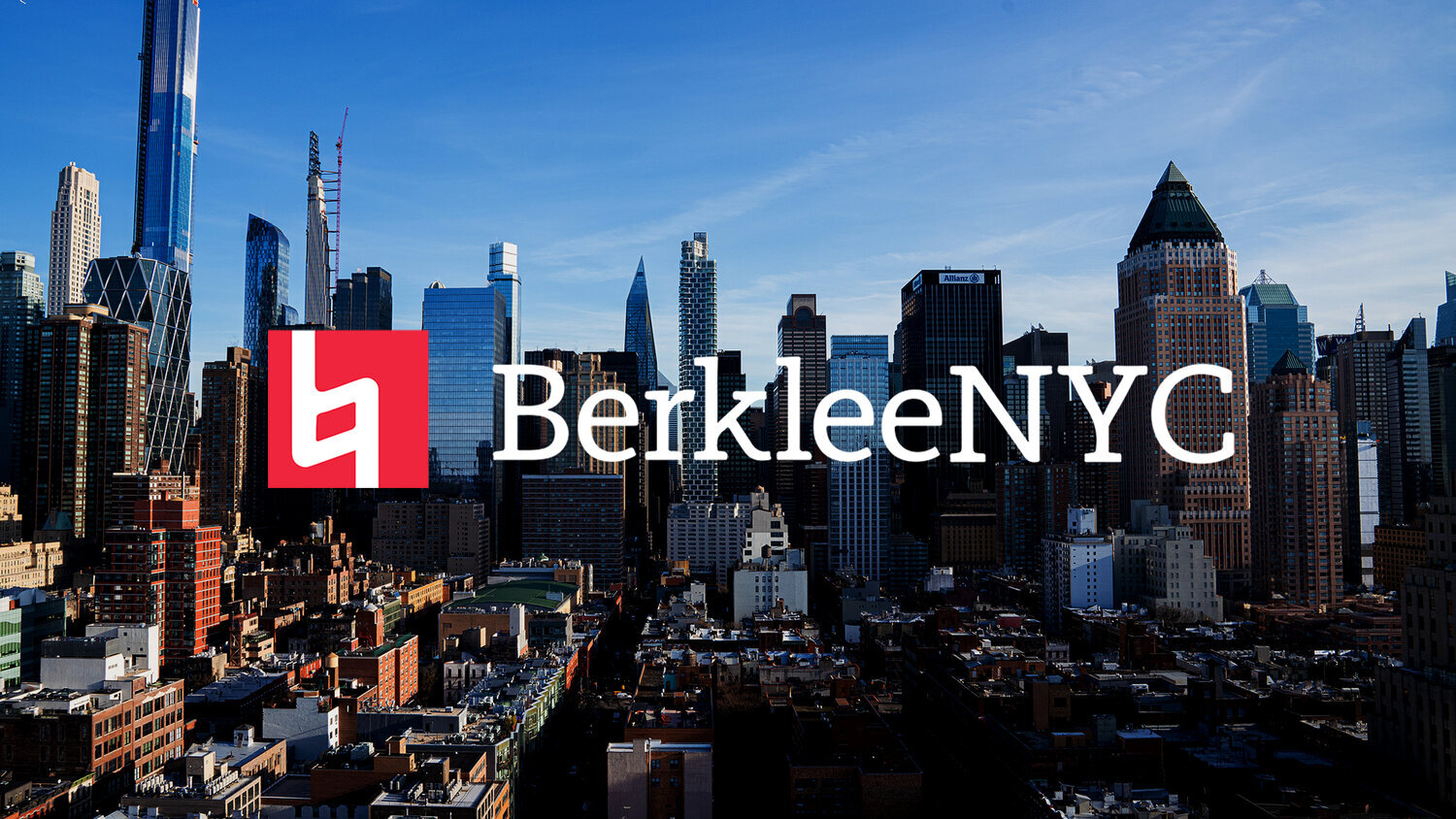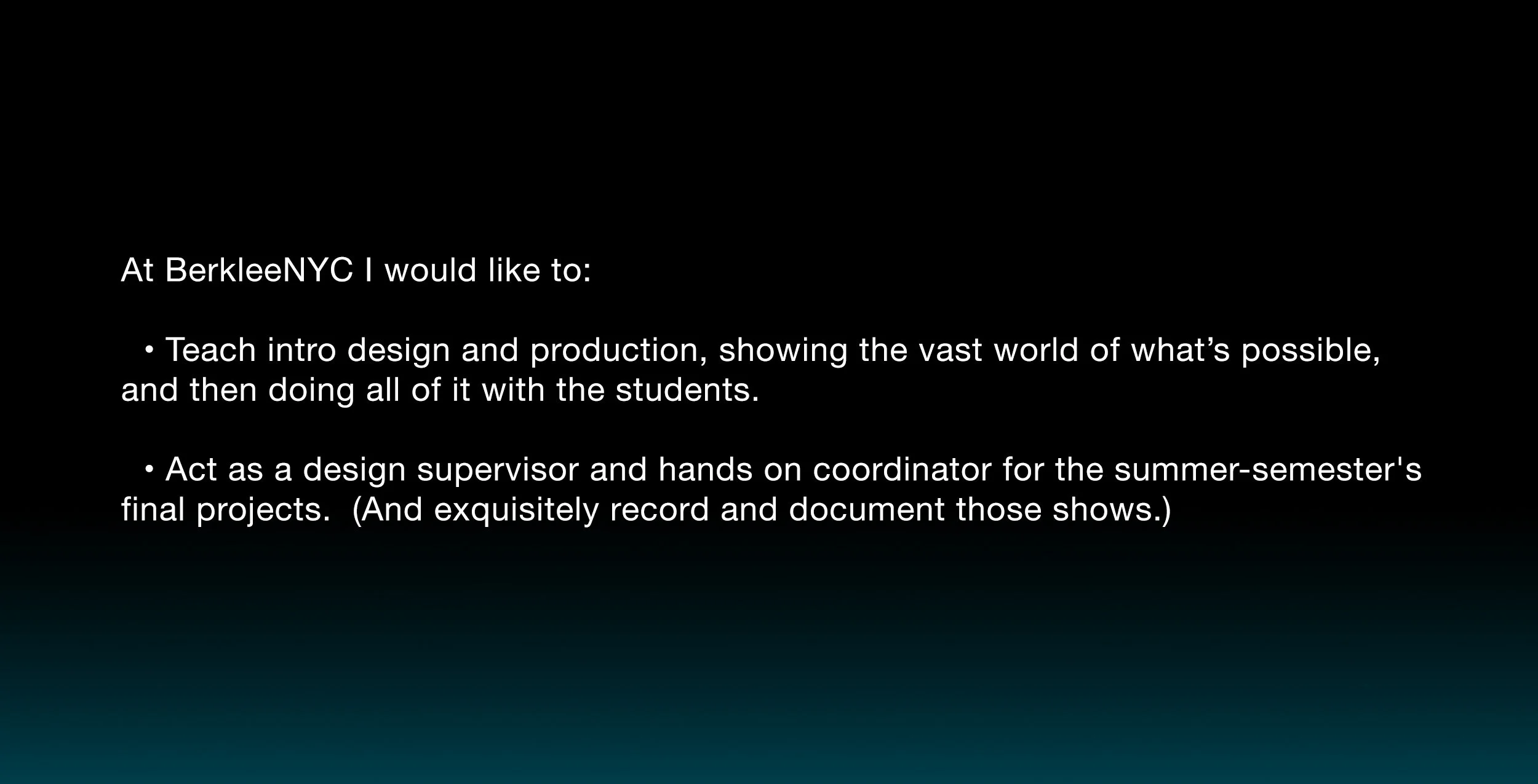BerkleeNYC


Technology can be the backbone of artistic innovation in performance.
MoroMedia Custom Media Server (3D Rendering of realized product.)

And artistry can be remixed to help us discover what it is to be human.
1:3 Scale Michelangelo’s David. Layered Polystyrene Foam.

Over 6 years ago I started to teach a simple, reliable, 3D workflow. A mindset for many interconnected tasks.

Today I examine my current workflow of artistry through technology. Visiting Assistant Prof, Lighting and Scenic Designer.

The design process always begins with real location research.

Knowing real is key to abstract creation.
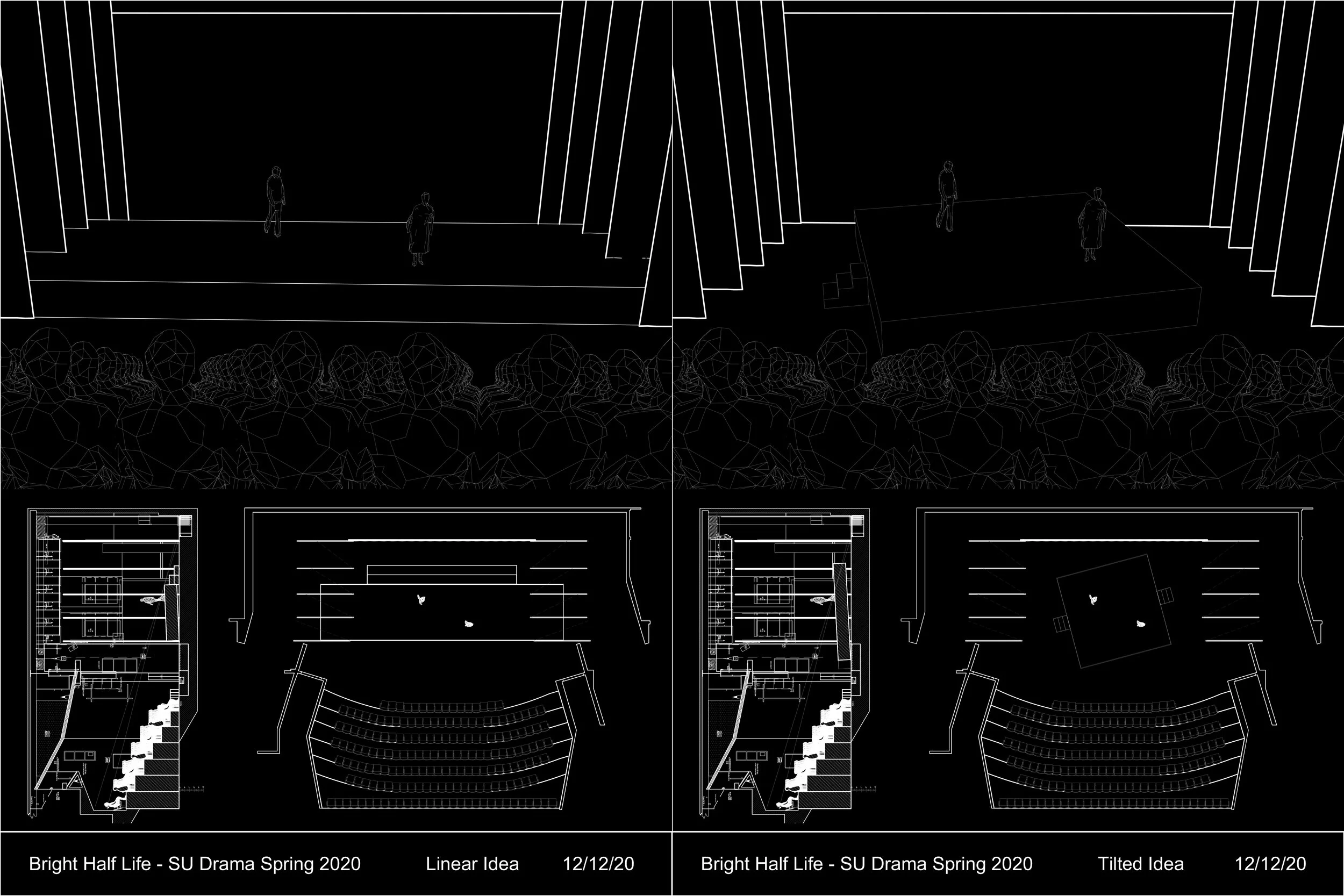
Quick composite groundplan/section/3D sketches. Loose, yet dimensionally accurate and representative.

Fast 3D rendering of idea 1. Pulls data directly from drafting sketch.

Fast 3D rendering of idea 1. Pulls data directly from drafting sketch.

Fast 3D rendering of idea 2. Pulls data directly from drafting sketch.

Fast 3D rendering of idea 2. Pulls data directly from drafting sketch.

As design conversations progress, swap out wood deck for abstract concrete location.

Instead of abstract and generic, concrete should feel real and specific.

Went over to midtown, shot hundreds of actual sidewalks, to find the right section. Happens to be 8th Ave and 40th.

These real research photos turned into paint plans for the scenic shop.

Real sidewalk texture, from real 8th ave, applied to 3D rendering environment.
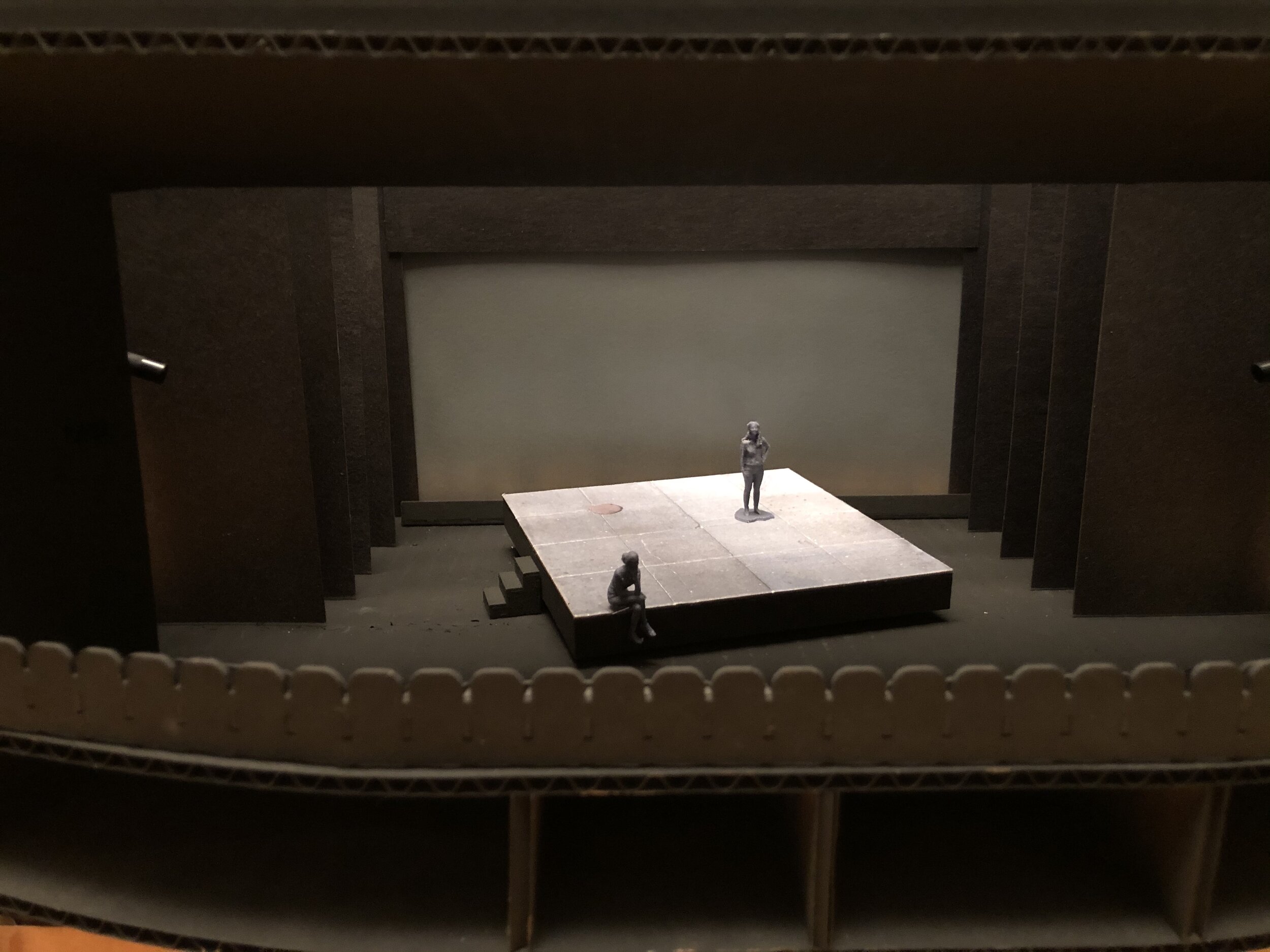
Sidewalk texture scaled, printed, and applied to physical model.
1/4” = 1’0” Model. Dimensions pulled from scenic drafting, and fabricated precisely with Laser Cutter and 3D printers.
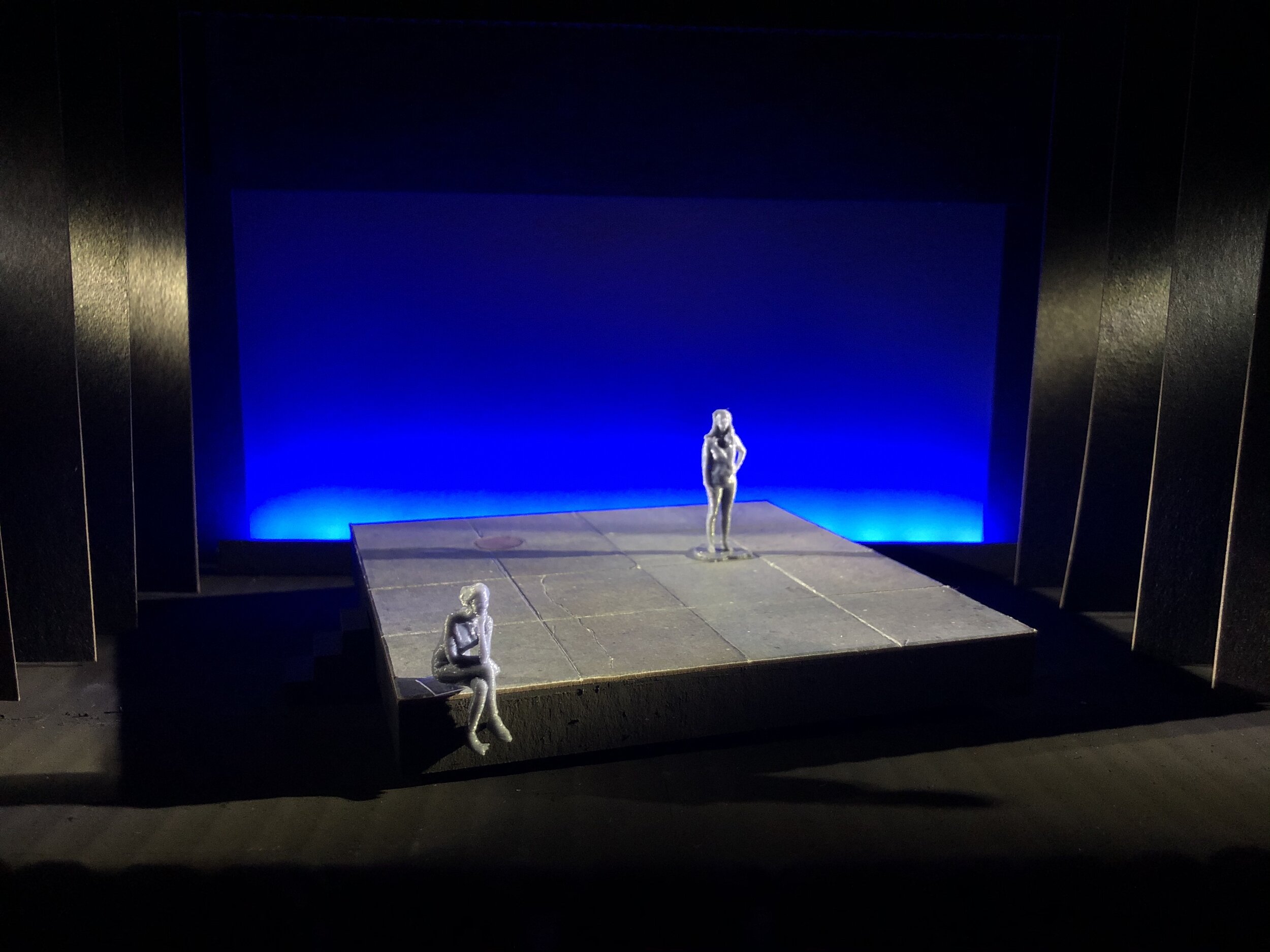
Scale lighting added to model.

Meanwhile, all changes are made in a central drafting 3D model. This referenced data ripples all changes out to the MANY 2D plates of drafting.








Once scenery is complete, all lighting positions and beams are modeled and adjusted.

It's a relatively small show, but all ~150 lighting instruments are placed to the inch.

This level of detailed planning means there will be no surprises in person at the theatre.

A traditional 2D Light Plot is generated, using and referencing real light positions.

Light plot references up to date scenic drafting and changes. All lighting paperwork dynamically syncs with the lighting console, and with the drafting file.

3D Scenery and all lights imported DIRECTLY into the lighting console. This can be used for pre-programming, basic previz, and in-person programming reference.
(This capability came to the EOS lighting console only a few months ago.)

OpenSource 3D rendering software Blender is used to check potential camera placement for the filmed production.

Camera placement, lensing, and even tilt-shift offset accurately pre-viz'd.

Even physically accurate depth of field is modeled, to help select and teach camera lensing and aperture settings.

Show is captured using those real lenses and Cine Cameras. Static tilt/shift wide shot, and close up follow cam.

Cameras are on during rehearsals to demonstrate the difference between live lighting, and lighting captured in camera.








All production photos by Joey Moro 2021©
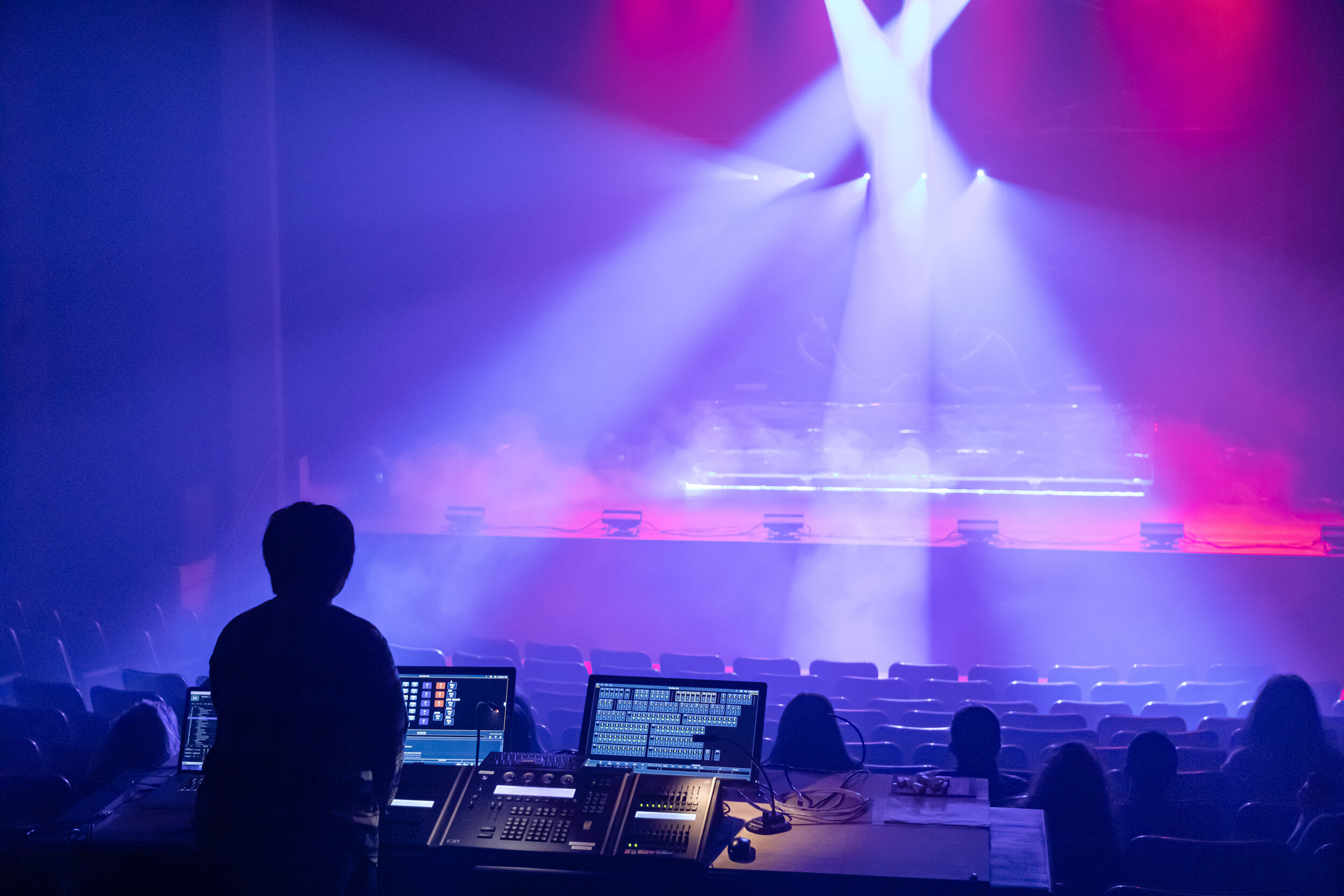
Automated Lighting Class Cornell Univ. Student Final projects.
(Students went from never having touched a console, to programming and/or live busking these pieces in 24 hours, after only 8 weeks of class.) More info here.

Automated Lighting, Cornell Univ 2020. Design by student Benjamin Nelson
Fully virtual final projects using ETC EOS Augment3d console software, in beta at the time.
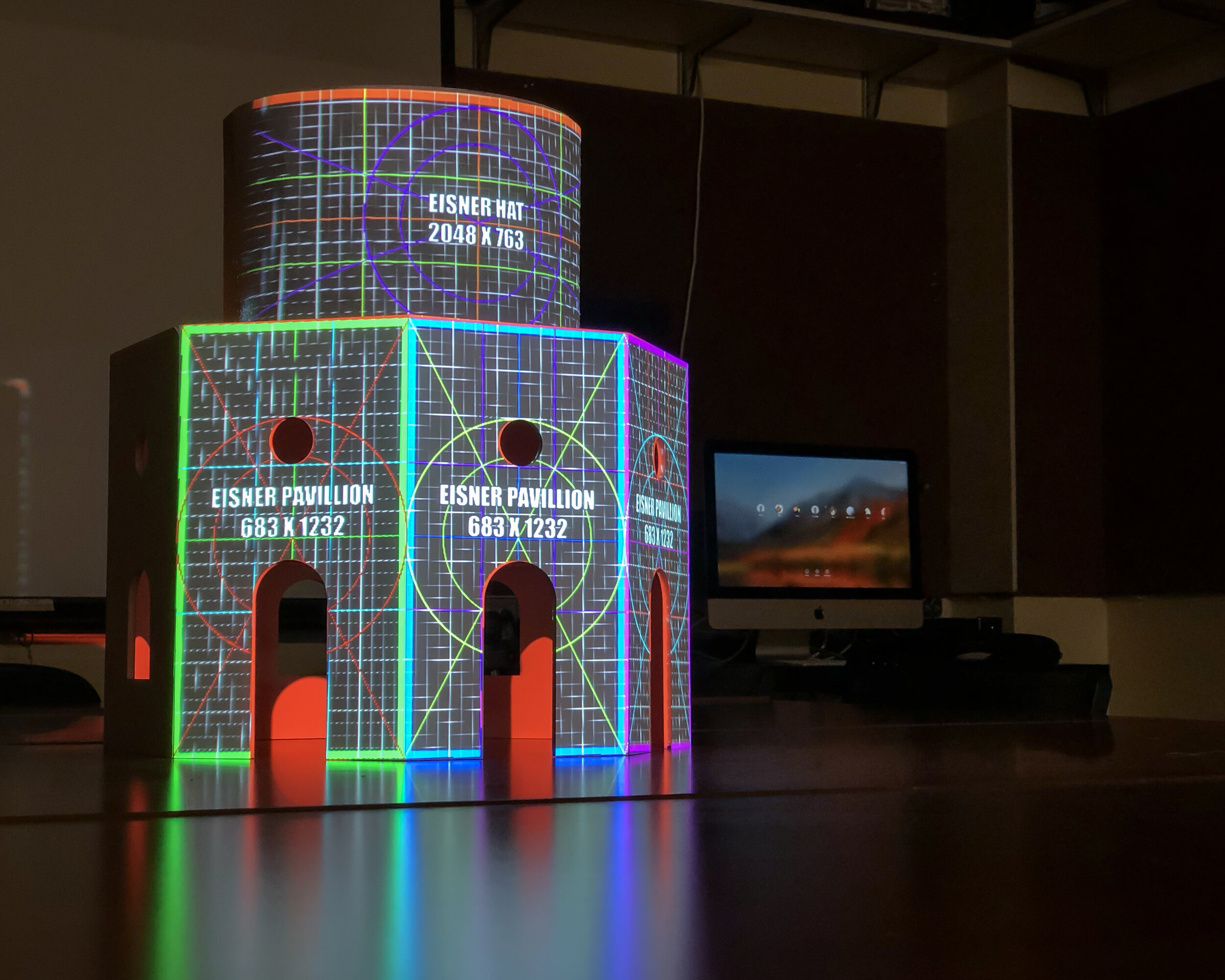
Image Design Studio at Cornell Univ. (Scale Model Mapping)
Students learned about projection design, from general composition concepts, through content creation in After Effects, and full 3D Mapping in Watchout.
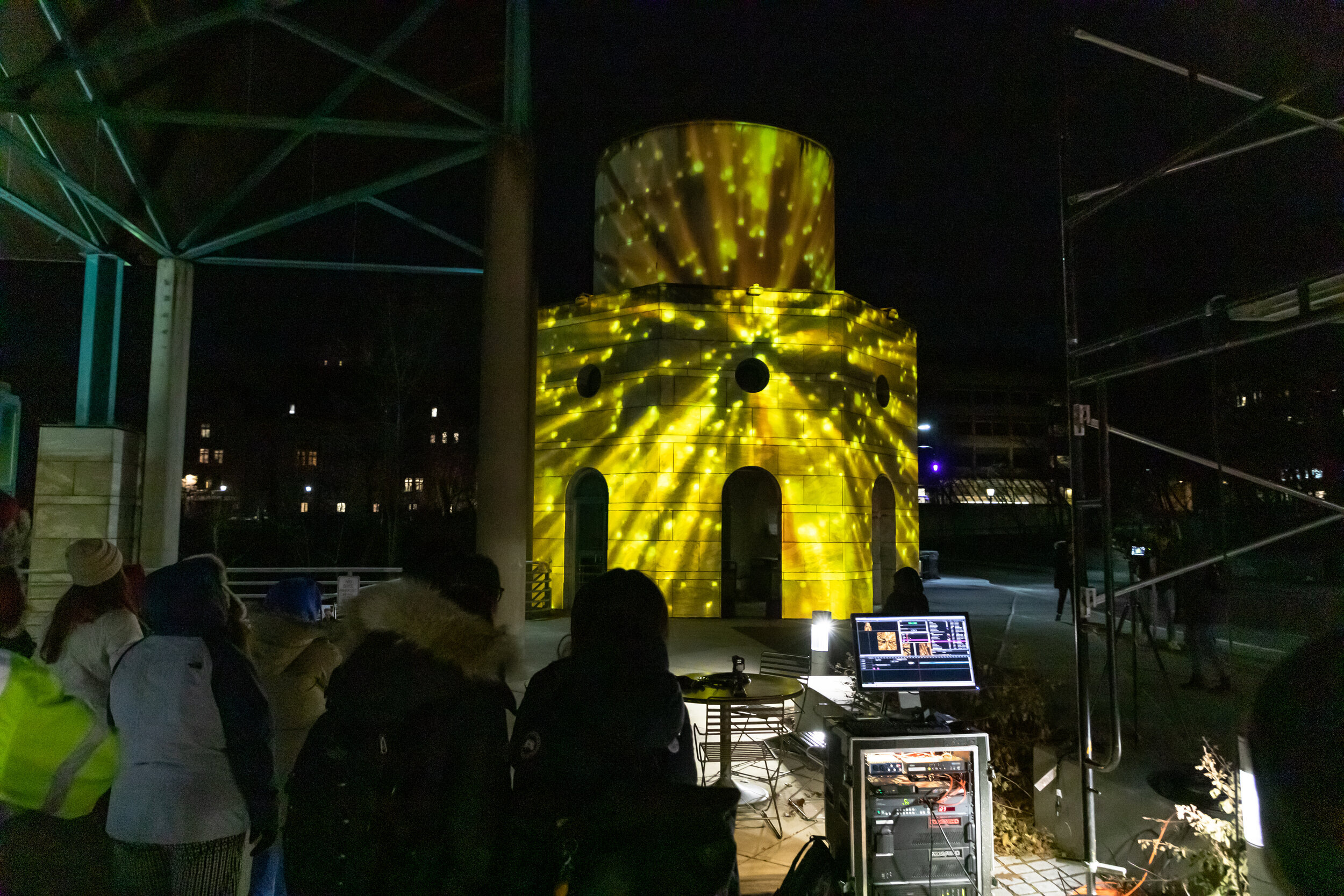
Image Design Studio Final Projects
Student final projects at Cornell Univ. Students made full music videos and mapped this outdoor installation in their final week of class. More info here.

3D previz and workflow for "Sunken Cities" at the Virginia Museum of Fine Arts.
